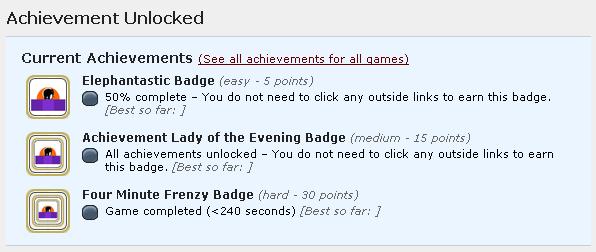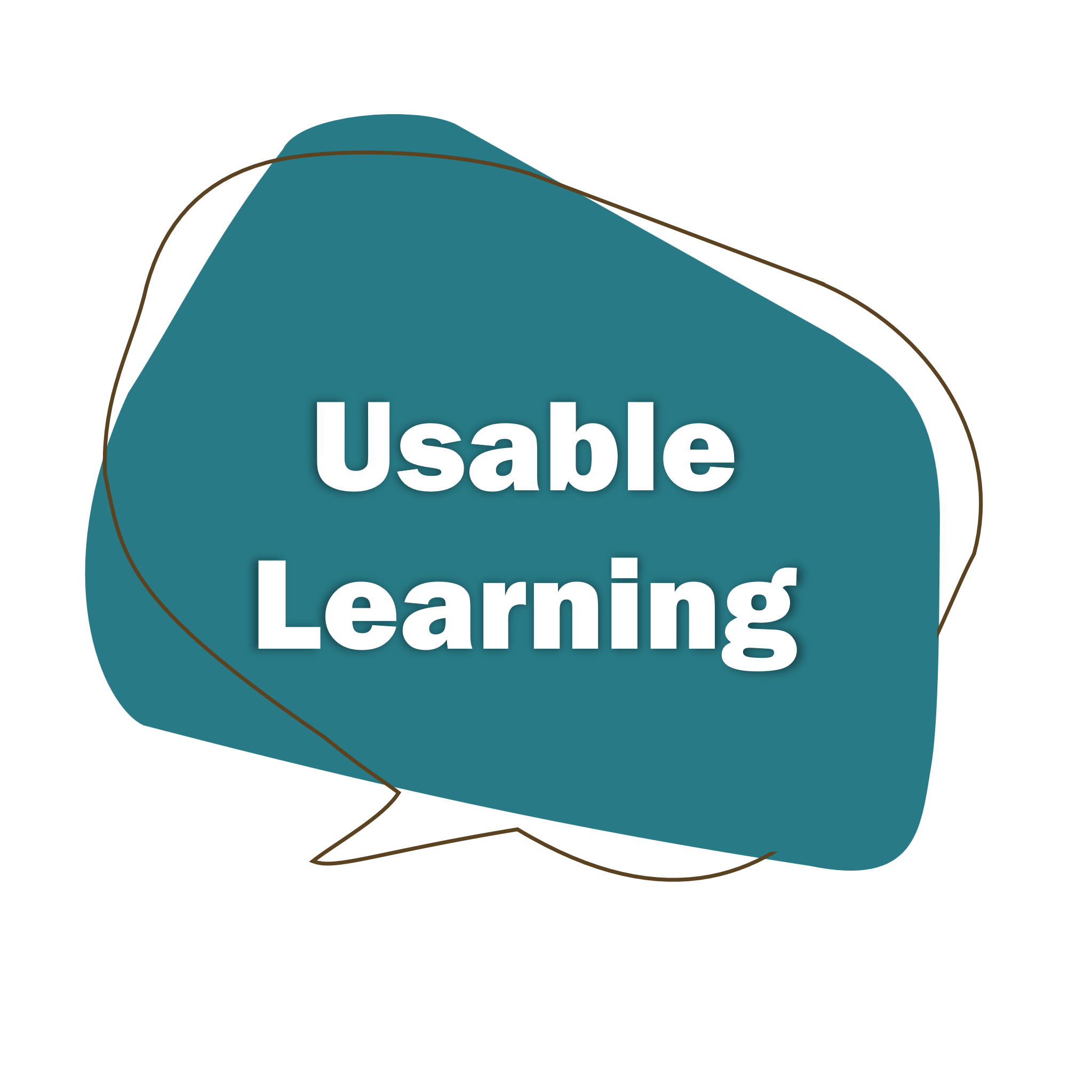Just read an awesome article on Gamasutra (I <3 them) on Creating the Illusion of Accomplishment by David Rosen.
What was most awesome about it was how matter of fact it was about the issue of creating a sense of accomplishment in games. Of course that’s what games are about. In fact, it’s about parodying accomplishments in games (and about how that’s STILL satisfying).

What’s really breathtaking about this is how BAD we are at this in learning (e-Learning or ILT). We’ve got this lovely pre-programmed need for people to accomplish things (see the SEED magazine article “Why We Haven’t Met Any Aliens” or Nytimes “Hijacking the Brain with a Nickel Slot Machine” for explanations of why we are hard-wired this way), and WE DON’T DO ANYTHING WITH IT.
Anyway, instructional designers focus so much on Learning Objectives (I always think of a working knowledge of Bloom’s Taxomy as the secret handshake of Instructional Design), but even if we have good learning objectives, I’m not sure we are using them right for design.
It seems to me that if we have good learning objectives (and that’s a big assumption – see Will Thalheimer’s approach for a way to write better objectives), that we should ask two design questions:
1) How is the learner going accomplish those objectives in the learning itself?
2) How is the learner going to accomplish real tasks/goals with those learning objectives both in the learning, and in the real world?
How different would instructional design be if the starting point was learner accomplishment?

Gamasutra is full of ID gems isn’t it? This sort of thing was one of the reasons I suggested The Art of Game Design for the bookgroup. Its certainly not a new idea to you or anyone reading your blog (perhaps), but the thinking strategy that gets applied to game design is loaded with all kinds of fun and amazingly effective things to wrap into eLearning. That book gets down to the nitty gritty of what a game designer actually thinks about when designing a game.
One of my favorite lenses in the book – “The Lens of Endogenous Value” which states, “To use this lens, think about your player’s feelings about items, objects, and scoring in your game. Ask yourself these questions:
– What is valuable to the players in my game?
– How can I make it more valuable to them?
– What is the relationship between value in the game and the player’s motivation?”
Good stuff that relates back to your excellent entry.